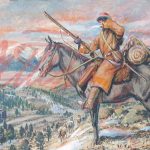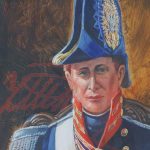“For those men have served with me many a long year and notwithstanding – they are such Dam’d Rascals that you could keep no Ducks or fowls for them, yet I think them very clever fellows.” On returning from his Mississippi River Expedition Pike described, in another letter, his men as being“perfectly capable of getting the job done, but all in all a set of dam’d rascals!” July 11, 1806 Pike Letter to Capt. Daniel Bissell

Zebulon Pike: Loyal and Heroic Explorer
by Allan Vainley
General Zebulon Montgomery Pike was a loyal and steadfast American growing up in the Revolutionary War American patriotic mentality. He was a trailblazer who explored a great deal of the 1803 Louisiana Purchase without the aid of maps.
Pike should be as revered, as Lewis and Clark, by us, and admired as a distinct historical figure.
Donald Jackson in his forward to the 1966 annotated edition of Pike’s journals and letters noted, “Nothing that Zebulon Montgomery Pike ever tried to do was easy, and most of his luck was bad,”. He made up for misfortune with strong tenacity.
Early Life
Zebulon Montgomery Pike was born near Lamberton, (today’s Lamington), New Jersey in on January 5, 1779, during the Revolutionary War. He was nicknamed Monty as well as Zeb. In 1801 he married Clarissa Harlow Brown. One child who survived- Clarissa Brown Pike, who married President William Henry Harrison‘s son, John Cleves Symmes Harrison. A son, died in infancy during his 2nd Expedition.
Pike joined the U.S. Army, in his father’s regiment as a cadet in 1794, at the age of 15. He became a 2nd Lieutenant early in 1799 and a 1st Lieutenant later in 1799 (age 20), following in the footsteps of his father, also named Zebulon, who was a veteran of the American Revolution and was still an active duty officer when young Pike joined.
Lt. Pike’s early duties along the Ohio frontier consisted of supervising the transportation and distribution of supplies to the various frontier posts. He brought cargo on the Ohio River to frontier posts. Assigned a logistics and payroll position at Fort Kaskaskia (IL) on the Mississippi, he caught the attention of the Governor of the Upper Louisiana Territory and became his protégé.
Pike lamented his lack of formal education, carrying books into the wilderness and reading voluminously. A slim, blue-eyed, pompous young man (today’s Pike family suspects he was short) with an odd habit of tilting his head to one side, Pike was highly ambitious and efficient.
Up the Mississippi– 1st Expedition
Pike soon became the protégé of James Wilkinson, the commanding general of Jefferson’s U.S. Army. Wilkinson, one of American history’s worst scoundrels, was also secretly a double agent for Spain. In the summer of 1805, Wilkinson gave Pike the difficult assignment of conducting a reconnaissance of the upper Mississippi River. While Lewis and Clark were at the headwaters of the Missouri River far to the West, Pike left St. Louis with orders to explore the Mississippi, survey for and purchase sites from American Indians for future military posts, bring a few important chiefs back to St. Louis for talks, and confront the British for their violations of treaty and international protocol associated with the Louisiana Purchase. He took a force of twenty men on a seventy-foot keelboat up the Mississippi, departing from Fort Bellefontaine (Cantonment) on August 9, 1805. Pike and his men explored the river into modern-day Minnesota, traveling to Cass Lake, which they identified (incorrectly) as the river’s source. The expedition returned to St. Louis on April 30, 1806. Pike was only modestly successful in his relations with the Indians, but brought back important geographical information about a little-known portion of the new Louisiana Territory.
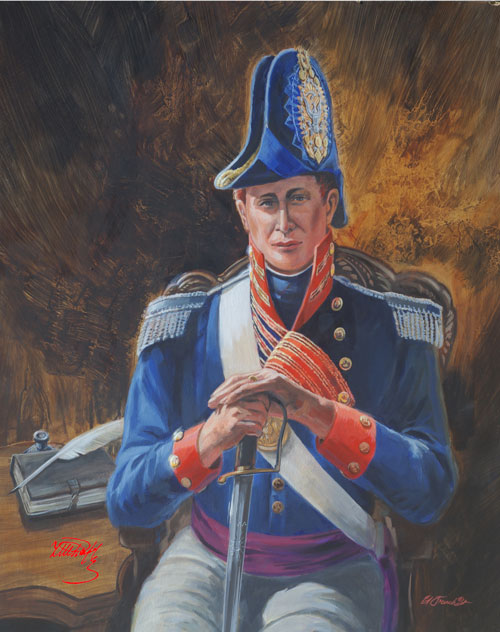
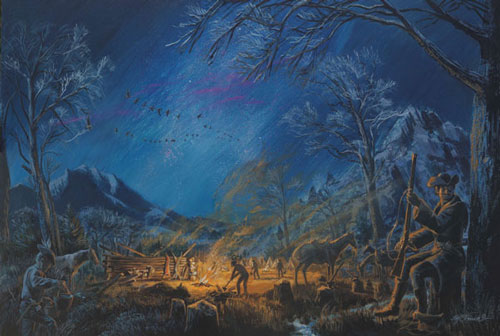
To the Southwest (Louisiana Purchase)- Southwest Expedition
Pike’s second expedition, 1806-1807, was designed to accomplish several goals, including providing an escort for fifty-one Osage Indians ransomed from the Potawatomi tribe and a delegation of Pawnees, Osages, and Otos returning from a trip to see President Jefferson; negotiating a peace between the Kansas and Osage tribes, and attempting to make contact with the Comanche people on the high plains. Pike was also to explore the headwaters of the Arkansas River, then to proceed south, locate the source of the Red River, and descend it to the Mississippi. As with Lewis and Clark further north, Pike was to closely study and report on natural resources and subjects of scientific interest, as well as the Indian inhabitants along the poorly defined southwestern border of the Louisiana Purchase. Pike brought along nearly all the soldiers from his Mississippi expedition, men he called a “Dam’d set of Rascals,” but who, nonetheless, retained the confidence of their commander. Gen. Wilkinson’s son, Lt. James Biddle Wilkinson, was to go part of the way and lead a small detachment back to St. Louis via the Arkansas and Mississippi rivers.
The headwaters of not only the Arkansas were found, the headwaters of the Osage, Cottonwood, and South Platte rivers were also explored. Pike collected information leading to him being referred to be called “The Father of the Santa Fe Trail”, recognizance for the Battle of the Alamo and the Mexican-American War.
The Business of Espionage
Wilkinson launched Pike’s expedition without the authorization of President Jefferson or the War Department, although it was approved retroactively. Tensions with Spain were high, and many Americans expected a war. Wilkinson, who was Governor of Louisiana during this period, was ordered to engage in intelligence operations against Spain, using army officers disguised as traders if necessary. What he was really up to, however, has remained a mystery. It appears that, in collaboration with Aaron Burr, he was planning a coup in the West. It has never been determined whether this was a traitorous movement designed to separate the western territories from the Union, or a plot to conquer Spanish territory without officially involving the United States Government. At any rate, Pike’s expedition to the Spanish borderlands are suspicious on James Wilkinson’s part.
We strongly suggest that Pike likely knew nothing of the Wilkinson/Burr intrigues, but was aware that his service to gather as much intelligence about the Spanish as possible for his country was important AS A TRAINED MILITARY OBSERVER. A letter between Pike and Wilkinson written on July 22, 1806, leaves little doubt that Pike knew he was to scout as close as possible to Santa Fe, and that he might be captured by Spanish authorities.
Getting Underway
Zebulon Pike left Fort (Cantonment) BelleFontaine on July 15, 1806 with nineteen enlisted First Infantry men and N.C.O’s; a volunteer physician- Dr. John H. Robinson; Baronet Vasquez- an interpreter from St. Louis; and Lt. Wilkinson as his second-in-command. The group made their way west across Missouri on the Missouri and Osage rivers. They returned Osage people to their villages (west of today’s Lake of the Ozarks on the Osage River), and moved out diagonally northwest across Kansas.
Read more about Pike’s adventures on the Osage River here.
Pike convinced the Republican Pawnee Indians (in southern Nebraska near Guide Rock) into replacing a Spanish flag flying above their village on American soil with the Stars and Stripes. This was accomplished despite that they had recently been visited by a Spanish cavalry of over 300 men. Can you picture this? Pike’s ‘force’ was 23 strong.
Upon reaching the Arkansas River, Lt. Wilkinson left the party as planned with five men, returning successfully to St. Louis despite three desertions. Pike and the fifteen others started up the Arkansas on October 28, following the trail of a troop of Spanish cavalry. On November 11, Pike made a bold decision; despite the fact that his party did not have the clothing, equipment or supplies for a winter expedition, they would press on. Proceeding nearly due west, they reached the site of modern-day Pueblo, Colorado on November 23.
The Blue Mountain
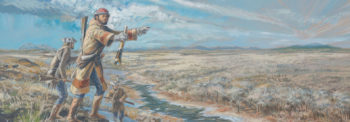
Painting, A Small Blue Cloud, by Ed French
Fascinated with a blue peak in the Rocky Mountains to the west that he had first sighted on November 15, Pike set out to explore it with two soldiers and Dr. Robinson, leaving the bulk of the men at a base camp in Pueblo. Pike spent several days in trying to reach the peak (which would later bear his name), but the lack of winter clothing and food eventually drove him back to the base camp.
Zebulon Pike never set foot on Pike’s Peak, although in their attempt to reach their goal the group scaled 11,499-foot Mt. Rosa, becoming the first Europeans to complete a high-altitude alpine ascent of a North American mountain.
Pike decided to follow the trail of the Spanish cavalry and head north up Four-Mile Creek from Cañon City and away from the Arkansas. This branch soon dwindled, as did the Spanish trail, so Pike turned overland due northward into South Park, discovering a river on December 12 which he correctly determined was the south and middle fork of the South Platte River.
Crossing over a mountain pass, he came to another river which he thought was the Red. In reality, the expedition was back on the Arkansas, seventy miles upstream from where they had left it two weeks earlier. Snow began to deepen, and Pike was disappointed that he could not reach the source of the river. The men spent Christmas eating buffalo meat near the modern-day city of Salida, Colorado. They worked their way down the river, the ice solid enough to support their horses, the huge vertical walls of the Royal Gorge towering above them on both sides. They were soon frustrated to find that they had traveled in a big circle. In order to reach the Red River, the mountains would have to be crossed on foot.
Decisions made in Cañon City, CO
He had come into Cañon City from the east, encountered the Royal Gorge to the west, and had explored to the north. They decided to attempt to find the Red River traveling now by foot south up Grape Creek into the Wet Mountain Valley. The interpreter Vasquez and Pvt. Patrick Smith were detailed to stay with the horses in a small wooden stockade on the Arkansas, while Pike set out with the others on January 14, 1807, through the Wet Mountain Valley and howling blizzards to find the Red River. Nine men soon suffered from frostbitten feet falling through ice in Grape Creek, including Pike’s best hunters. Pressing on, wading through sometimes waist-deep snow, Pike left three men behind who could not continue. Crossing the Sangre de Cristo Mountains, Pike found the area of present-day Great Sand Dunes National Park and the headwaters of the Rio Grande, which he mistakenly thought was the Red River. A small stockade was built near modern Alamosa, Colorado. A replica of this Stockade was built on the Conejos River one mile downriver from the actual site.
Dr. Robinson begged leave to contact the Spanish officials in Santa Fe, as he had a document which gave him authority to collect a debt there for a merchant in Kaskaskia, Illinois. Pike gave his permission, and Robinson hiked overland to reach his objective, telling Spanish Governor of New Mexico Joaquín Alencaster on his arrival that he had recently left a party of hunters. Suspicious, Alencaster reported the incident to his superiors and sent out patrols in the hope of apprehending some of the doctor’s companions. Pike sent back two relief parties to bring up the three scattered men left behind with frostbite, as well as the two left on the Arkansas with the horses. Only one of the three frostbite victims could be brought back; the others, too sick to move, actually sent bits of gangrenous toe bones to Pike in a macabre appeal not to be abandoned.
On February 16, 1807, Pike and a hunting companion were discovered by a pair of Spanish cavalrymen. On February 26, a troop of Spanish soldiers rode up to Pike’s stockade and informed him that he was in Spanish territory. “I immediately ordered my flag to be taken down and rolled up,” Pike wrote. He agreed to accompany them to Santa Fe with those of his men not still afield, and they departed the stockade two days later. Spanish patrols assisted with Pike’s frostbitten soldiers, and eventually escorted the rest of the party to Santa Fe. After being questioned about his mission by Governor Alencaster, Pike was sent south to Chihuahua to be examined by the Commandant General of the Internal Provinces, Nemesio Salcedo. Although Salcedo confiscated a number of Pike’s papers and notebooks, neither Pike nor his men were mistreated, and the majority were returned to U.S. territory at Natchitoches, Louisiana on July 1, 1807. Dr. Robinson claimed asylum in Mexico, but was not allowed to stay. Five of the men were held by the Spanish for two years, and one, Sgt. William Meek, was imprisoned until 1821 after killing Pvt. Theodore Miller in a drunken scuffle. By sending Pike south to Chihuahua, Alencaster inadvertently gave Pike the opportunity to gather much valuable intelligence about largely unknown regions of northern New Spain for the United States, and he was reprimanded for it by Salcedo. Salcedo, in turn, was reprimanded by the King of Spain for releasing Pike before receiving an apology from the U.S. Government for trespassing. While in New Spain (now New Mexico, Mexico and Texas) 9 fandangoes were enjoyed by Pike and his men, and they were allowed to carry their weapons and ammunition.
Although untrue, Zebulon Pike was suspected of having a role in the “Burr Conspiracy” upon his return to the United States. There were those who were critical at that time. President Jefferson considered him a competent military man. He rose quickly in the military gaining the rank of General in six years. His military accomplishments were widely celebrated in memorials, paintings, poems, songs, and biographies. He became the namesake for dozens of towns, counties, and ships.
However, unlike Lewis and Clark, neither Pike, nor his men, received extra pay or grants of land for their service.
A Hero’s End
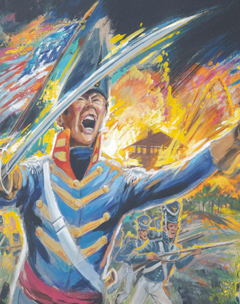
Painting, Glory – Battle of York by Ed French
Pike’s personal glory came when war was declared on Great Britain in 1812. As a Brigadier General he led a Regiment from Lake Champlain in northwest New York to ascertain British strength in their capital- Montreal.
While leading a successful attack on York, the capital of Upper Canada (today’s Toronto) on April 27, 1813, now-Brig. Gen. Pike was fatally wounded by flying debris when a powder magazine exploded. He is buried in Sackets Harbor, NY the home base of his operations. The Canadians have great respect for Pike as there are two memorials at Toronto’s Fort York. In 2014 they installed a third panel at the landing site of Pike’s ships.
Throughout an amazing life, this stubborn and persistent man performed extraordinary feats on behalf of his country, but luck was never with him. Unlike his contemporaries Lewis and Clark, he is relatively obscure today, save for the use of his name on a mountain he never climbed, and memorials across the US and in parts of Mexico and Canada.
20 Members of the First Pike Expedition, 1805-06
1st Lt. Zebulon Montgomery Pike
- Corporal Samuel Bradley
- Corporal William E Meek
- Pvt. John Boley
- Pvt. Peter Brandon
- Pvt. John Brown
- Pvt. Jacob Carter
- Pvt. Thomas Daugherty
- Pvt. William Gordon
- Pvt. Salmon Huddleston
- Pvt. Jeremiah Jackson
- Pvt. Hugh Menaugh
- Pvt. Theodore Miller
- Pvt. John Mountjoy
- Pvt. David Owens
- Pvt. Alexander Roy
- Pvt. Patrick Smith
- Pvt. John Sparks
- Pvt. Freegift Stoute
- Pvt. David Whelpley
Those in bold were on both expeditions.
23 Members of the 2nd Pike Expedition, 1806-07
Note: 16 men on the first expedition accompanied Pike West on the 2nd expedition, 3 returned East with Lt. Wilkinson on the Arkansas River at Great Bend, KS (as planned) and 13 remained with Pike West of Great Bend, KS.
Capt. Zebulon Montgomery Pike (promoted from 1st Lt.- autumn 1806)
- Dr. John H. Robinson
- Antoine Baronet Vasquez (civilian interpreter)
- Cpl. Jeremiah R. Jackson
- Cpl./Sgt. William C. Meek (killed Pvt. Theodore Miller while captive in Mexico to protect Pike papers)
- Pvt. John Brown
- Pvt. Jacob Carter
- Pvt. Thomas Daugherty (Pike’s assistant; one of those who sent toe bones to Pike from the Wet Mountain Valley)
- Pvt. William Gordon
- Pvt. Hugh Menaugh (frostbitten in the Wet Mountain Valley but returned to SLV stockade)
- Pvt. Theodore Miller (killed to protect Pike papers in Mexico by Meek)
- Pvt. John Mountjoy
- Pvt. Alexander Roy
- Pvt. Patrick Smith
- Pvt. John Sparks (hunter; one of those who sent toe bones to Pike from the Wet Mountain Valley)
- Pvt. Freegift Stout
- Pvt. Henry Kennerman (deserted early in Missouri. Sent back with Lt. Wilkinson from Great Bend, KS to Arkansas Post, MO)
Those men departing down the Arkansas River as planned on October 28th 1806 to Arkansas Post, AR.
- Lt. James B. Wilkinson (General James Wilkinson’s son)
- Sgt. Joseph Ballinger
- Pvt. John Boley (deserted Wilkinson)
- Pvt. Samuel Bradley (deserted Wilkinson)
- Pvt. Solomon Huddleston (deserted Wilkinson)
- Pvt. John Wilson
This article is, in part, a contribution to the Zebulon Pike Bicentennial by Bob Moore, Park Historian of the Jefferson National Expansion Memorial National Park, St. Louis, MO.
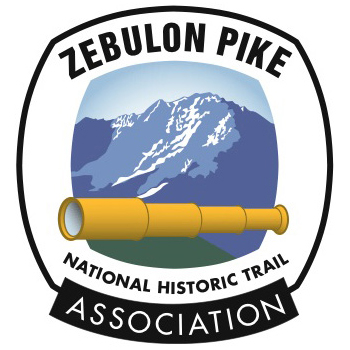
![Introducing the General Zebulon Montgomery Pike INTERNational Historic Trail [ZPIT]](https://www.zebulonpike.org/wp-content/uploads/2018/07/21-St-Anthony-Falls-144dpi-wm-150x150.jpg)

